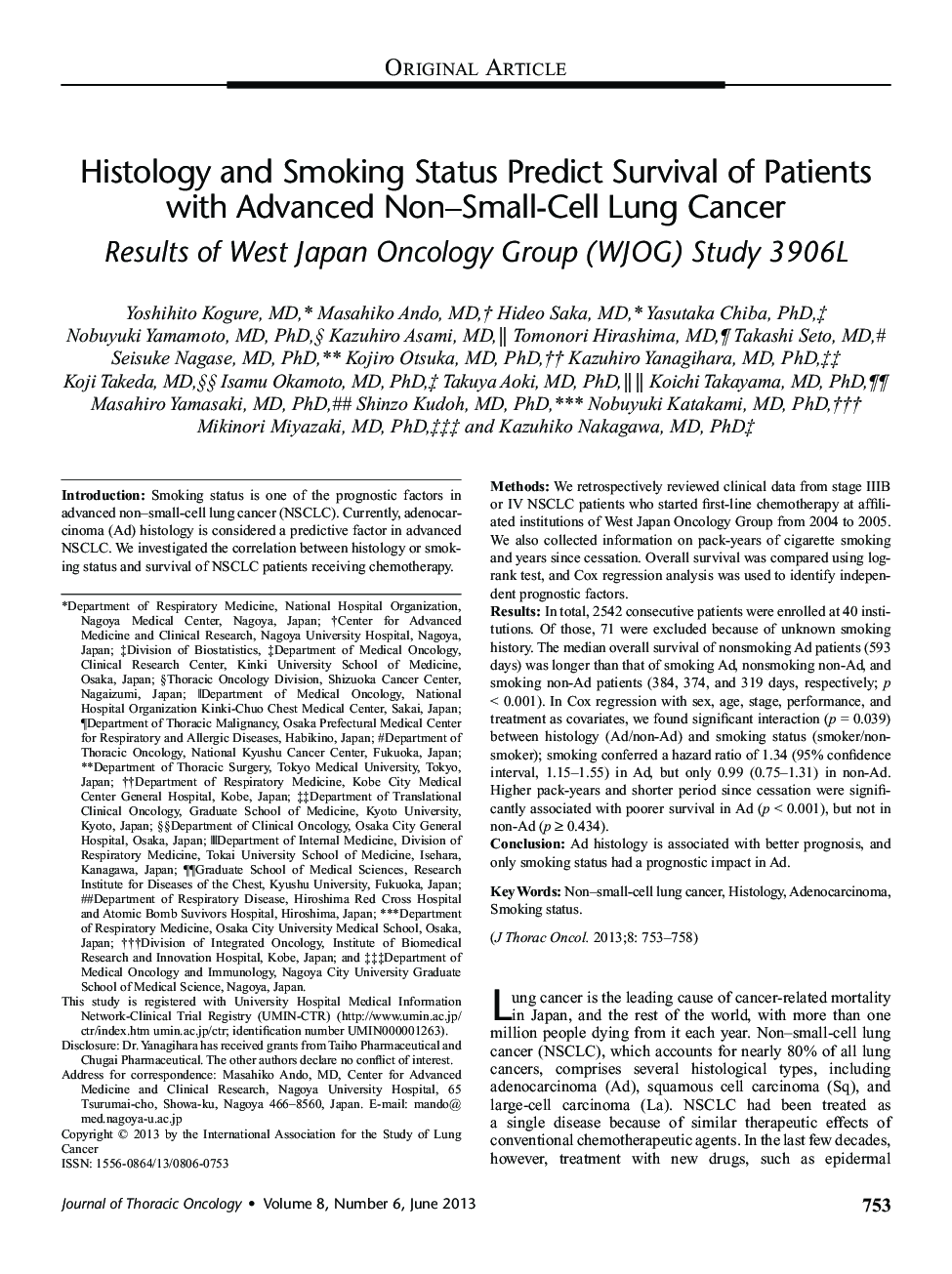| Article ID | Journal | Published Year | Pages | File Type |
|---|---|---|---|---|
| 3989834 | Journal of Thoracic Oncology | 2013 | 6 Pages |
IntroductionSmoking status is one of the prognostic factors in advanced non–small-cell lung cancer (NSCLC). Currently, adenocarcinoma (Ad) histology is considered a predictive factor in advanced NSCLC. We investigated the correlation between histology or smoking status and survival of NSCLC patients receiving chemotherapy.MethodsWe retrospectively reviewed clinical data from stage IIIB or IV NSCLC patients who started first-line chemotherapy at affiliated institutions of West Japan Oncology Group from 2004 to 2005. We also collected information on pack-years of cigarette smoking and years since cessation. Overall survival was compared using log-rank test, and Cox regression analysis was used to identify independent prognostic factors.ResultsIn total, 2542 consecutive patients were enrolled at 40 institutions. Of those, 71 were excluded because of unknown smoking history. The median overall survival of nonsmoking Ad patients (593 days) was longer than that of smoking Ad, nonsmoking non-Ad, and smoking non-Ad patients (384, 374, and 319 days, respectively; p < 0.001). In Cox regression with sex, age, stage, performance, and treatment as covariates, we found significant interaction (p = 0.039) between histology (Ad/non-Ad) and smoking status (smoker/nonsmoker); smoking conferred a hazard ratio of 1.34 (95% confidence interval, 1.15–1.55) in Ad, but only 0.99 (0.75–1.31) in non-Ad. Higher pack-years and shorter period since cessation were significantly associated with poorer survival in Ad (p < 0.001), but not in non-Ad (p ≥ 0.434).ConclusionAd histology is associated with better prognosis, and only smoking status had a prognostic impact in Ad.
